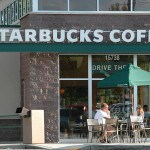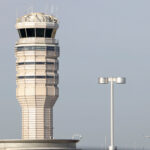The settlement checks have been arriving without fanfare in the mailboxes of 262 Virginia families whose homes were built with toxic Chinese-made drywall.
It’s the first money that many of the families in a class-action lawsuit have received since discovering about five years ago that their walls were sickening them and destroying their homes.
But there were no celebratory undertones in recent conversations The Pilot had with several of the families.
There were a few expressions of gratitude – at least they got something – but they also spoke more strongly of bitterness, exhaustion and defeat.
Some said the public will assume they’re getting rich when they read that $9 million was dispersed from insurers representing Virginia companies involved in bringing Chinese drywall to the United States or building with it.
The reality is far from that.
Many of the families lost their homes and every penny they put into them – from hefty down payments to expensive area rugs. It added up to hundreds of thousands of dollars for most of the homeowners.
If the settlement money were divided evenly, it would amount to about $34,400 for each. The checks will vary significantly, though, based on whether a homeowner’s builder and drywall installer were part of the settlement.
The Pilot has documented the financial travails of some of the families. Those who were able to stay afloat did so by raiding their retirement accounts or going deeper into debt.
The less fortunate lost their homes through foreclosure or filed for bankruptcy. Their credit scores are still damaged.
Rorrie Jefferies, a paralegal who lost $400,000 in her meticulously designed custom home in Hampton, declined to specify the amount she received but said it is less than the average amount because her builder and installer did not settle.
The money Jefferies got helped her finish paying off a $25,000 air conditioning system she installed in her former home after the original broke – but before she realized Chinese drywall was the culprit that destroyed it.
Liz Heischober, a speech therapist in Virginia Beach public schools, said she and her husband, Steve, plan to put their settlement money in their retirement accounts, which they drained in order to buy a new house after selling their retirement home for far less than what they paid for it. She declined to say how much they received.
“We’re grateful to get a little something back, but it’s nowhere near what we deserve to get back or what we lost,” Heischober said. “And we probably won’t ever see that.”
Some of the families said they feel no sense of closure because the Chinese manufacturer of the toxic drywall has refused to pay for their losses, even though courts have ordered it to do so.
The Heischobers and six other Hampton Roads families are collectively owed $2.6 million from Taishan Gypsum Co. Ltd. in a test case in which the company was found liable. Thousands of other Americans also stand to be paid if the company decides to settle.
“Justice will be served when the Chinese are held accountable,” Heischober said.
The drywall made by Taishan seeps hydrogen sulfide into the air. It’s a highly toxic gas that can kill humans instantly in high doses, but has been blamed by the federal government for causing homeowners’ headaches, nosebleeds and respiratory ailments in low concentrations.
Hydrogen sulfide also corrodes metal, including wiring, appliances, faucets and jewelry. Homeowners spent thousands through the years replacing refrigerators, air conditioning systems, computers and televisions, not realizing their walls started to damage their new electronics the moment they brought them home.
In total, $17.4 million was awarded to homeowners through the settlements with insurers representing Virginia companies, but around 30 percent of that was paid to lawyers and another small percentage was spent on court expenses.
The Garretson Resolution Group, a law firm based in Ohio, was responsible for splitting up the money. A spokeswoman for the company said roughly $9 million – or 80 percent of the pot set aside for homeowners – has been dispersed for property claims. The other 20 percent will be split up based on other types of claims, which were not common to the class as a whole.
Those that contributed include Nationwide, on behalf of 35 builders, installers and developers; Hanover and Citizens Mutual, on behalf of drywall importer and distributor Venture Supply and its sister company, Porter-Blaine; State Farm, on behalf of drywall broker Tobin Trading and two installers; and Builders Mutual, on behalf of 19 builders, installers and developers.
Was this article valuable?
Here are more articles you may enjoy.

 Supreme Court Refuses to Revive Youths’ Climate-Change Lawsuit
Supreme Court Refuses to Revive Youths’ Climate-Change Lawsuit  Ticketmaster May Have Broken Law With ‘Platinum’ Oasis Seats
Ticketmaster May Have Broken Law With ‘Platinum’ Oasis Seats  California Man Wins $50M in Lawsuit Over Burns From Starbucks Tea
California Man Wins $50M in Lawsuit Over Burns From Starbucks Tea  FAA Must Do Better After Midair Collision, Acting Chief Says
FAA Must Do Better After Midair Collision, Acting Chief Says 